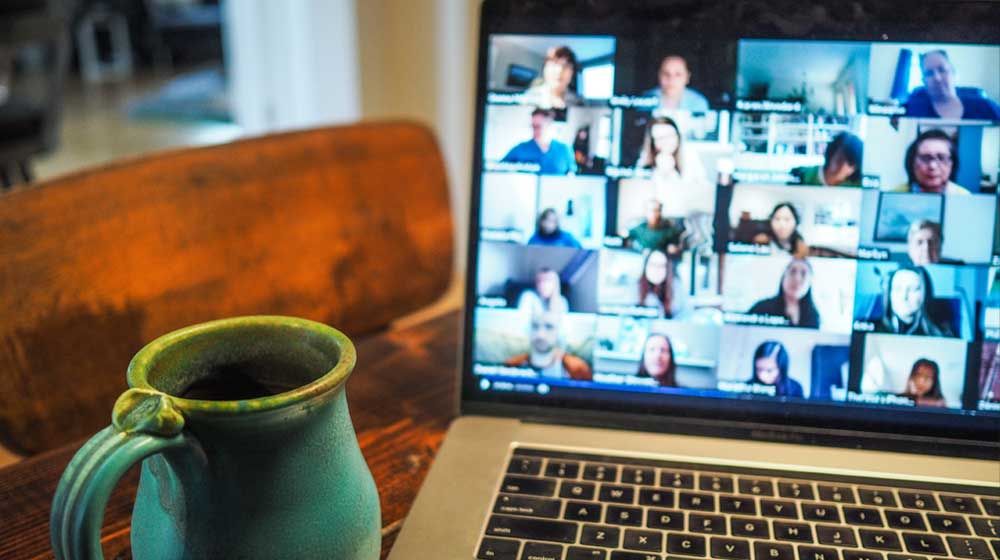Why Live Proctoring of Online Exams Is Becoming Mainstream

It is a large understatement to say that the Covid-19 pandemic has transformed the world of education. Many schools have had to transition to a fully online learning model or a hybrid format. However, there is still the question of how to assess students on what they've learned. Taking exams online on a computer, table or similar electronic devices has already been becoming standard practice, albeit gradually, due to large benefits around security of exam content including test questions, ease of marking and management of candidate results. However, providing online proctoring was less mainstream, possibly due to concerns around academic integrity being maintained during testing.
The pandemic has made remote proctoring exams online a ‘must have’ rather than a ‘nice to have’, which enables secure, proctored exams to take place without students having to gather in large numbers at test centres or campus halls. Online live proctoring is now essential for educational institutes and professional associations to be able to maintain their examination programmes for assessment of learning and access to key data.
It appears educational institutes expect live a test online to remain as the new norm. The flexibility and convenience of this system will make it less attractive to return to test centres, but perhaps what we will see is a blended approach, scheduling the in-person exams complimented by online proctoring. The benefits of remote proctoring exams online are numerous, for both the examining body and the candidate, and to have the flexibility to switch to online live proctoring delivery as required may be a necessary feature for any assessment software in the future.
What are the Different Kinds of Proctored Online Exams?
There are different kinds of proctored exams online. All have their distinct advantages and disadvantages, and you need to understand the different approaches to find the model that will work for your exam requirements.
Live Online Proctoring
In a live proctored exam, the exam proctor monitors the student for the duration of the exam session. Depending on the software solution you use, proctors will use a combination of audio, video and screenshare connections to monitor the candidate in the testing environment. They are observing students take the exam in real-time, and can see their face, desk and what they are doing on the screen. This is contingent on access to the right internet speed.
You still have the human element in this approach to testing, meaning a human with the right certification observes students as they take their exam. Because it's remote, though, the proctor can do this from anywhere, and students can take the exam from anywhere. This removes the need for special test centres to proctor exams.
There is usually a much lower candidate to proctor ratio than in a test centre, so the level of observation can be very close with these services. The downside may be that the cost will be higher for longer exams, but you have to factor in the saved costs of not having to provide test centres and in-person invigilators for each exam.
Record and Review Proctoring
In the record and review exam proctor scenario, the student and their screen are recorded as they take the exam. Later, proctors can access and review this recorded video data in a dashboard. Security is always a top priority for any data stored on this system. These proctors can then look for any suspicious signs that the student may have cheated on their exam.
The advantage to record and review proctoring is that there doesn't need to be a set schedule for proctoring the exam. You do still need a proctor to access and view footage of test-taking students later, though. However, even watching the complete recordings speeded up on a dashboard, it's possible the instructor could miss something.
The other important factor with record and review services, is that there can be no real-time intervention if the candidate is doing something outside of the exam rules. If they are photographing the exam content for example, and sharing it with others, this will not be picked up until it is too late. With live proctoring, exam content is kept secure, and if the candidate does anything outside of exam rules, an infringement can be raised or the exam can be closed, if the candidate continues with behaviour that is not permitted.
Automated Proctoring
In the area of online live proctoring, there is a lot of talk about using artificial intelligence as part of the process, because this is an area where artificial intelligence could add a lot of value. So for example, computers could watch videos and highlight things and actually learn what behaviour looks like cheating. However, we need to be cautious about the immediate impact of artificial intelligence. Artificial intelligence in remote proctoring is more of a ‘work in progress’ and helps humans to make decisions. We are a long way from a computer being able to monitor a candidate and identify cheating behaviours in practice. Proctors or instructors are still required to verify any data.
Can't Students Still Cheat on Online Proctored Exams?
There are many ways in which online proctoring can make the act of cheating much harder to achieve than in a test centre through the right monitoring system.
For starters, with a remote proctoring system or setup, the ratio of candidates to proctor is much lower, so they are being observed much more closely for suspicious behavior in the room. For example, a proctor may monitor only 6 test takers at a time. Whereas in a test centre, an in-person proctor may be trying to monitor hundreds of candidates.
Another interesting factor with remote proctoring is that while the proctor can see the candidate clearly, the test taker cannot see the live proctor. In a test centre, a candidate can watch where the proctor is in a room, and when they are looking away during a session, could check a hidden note for example. In the online scenario, the candidate has no idea if or when there is a moment they could “safely” check something.
The other thing to consider is that even with live proctoring, the session is recorded. If any test takers have had an infringement raised by a live proctor during the exam session, but challenges this, the recording can be reviewed later by the examining body.
With a live remote proctoring approach and a low candidate to proctor ratio, exam integrity is maintained at a very high level and it is easier to verify results.
Instructors and live proctors can also be used to search for and request the removal of leaked materials that could impact exam integrity.
If you're looking for more ways to ensure online exam integrity or improve online learning with a quality solution, contact us to schedule a demo today.
Sign up below to receive a once-a-month update from our blog, so you can stay informed on the most recent news from the world of assessment.
Read more about the benefits of online proctoring as well as see a short video here.

















